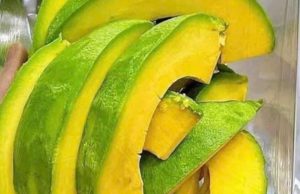
When it comes to kitchen tools, the rice scoop is often ignored. It’s a simple utensil, usually resting quietly inside the rice cooker or drawer, waiting for its turn at dinner time. Yet, anyone who cooks rice regularly understands how crucial it is to have the right scoop. The difference between a smooth rice scoop and one with small raised dots or textured surfaces may seem minor, but this design detail significantly alters the way we use it.
The Traditional Smooth Rice Scoop
For decades, rice scoops were created from wood, bamboo, or later, smooth plastic. Their function was simple: to transfer cooked rice from the pot to a plate or bowl. A smooth surface provides a sleek appearance, and in earlier times, it was easier to carve or mold. However, this design came with a drawback: rice sticks.
When rice is freshly cooked, it is warm, moist, and slightly sticky. A smooth scoop offers no resistance, so grains cling to the surface. Anyone who has tried to serve rice with a smooth scoop understands the frustration—grains pile up, clump together, and sometimes refuse to come off without scraping. Over time, this can feel messy and inconvenient, especially when serving multiple people.
The Innovation of the Dotted Scoop

The dotted rice scoop, often made of durable plastic or silicone, was considered as a solution to this everyday annoyance. Instead of a slick, shiny surface, these scoops have small raised dots or a textured pattern across the face. This isn’t just for decoration – the dots create tiny air pockets between the scoop and the rice.
By reducing direct surface contact, rice grains are less likely to cling. Each scoopful becomes smoother, quicker, and more efficient. The dots also help prevent rice from compressing into a sticky layer on the utensil, which means less wasted food and less cleanup afterward.
Practical Benefits in Daily Use
The difference may seem subtle, but anyone who has switched from a smooth scoop to a dotted one immediately spots the improvement:
- Non-stick convenience – Rice slides off easily, saving time when serving.
- Cleaner presentation – Each portion seems neat without clumps left behind.
- Less food waste – Grains don’t remain stuck to the scoop.
- Easier cleaning – The scoop rinses clean without stubborn residue.
- For households where rice is a daily staple, this small detail boosts the entire dining experience.
Why Design Matters
The dotted rice scoop is a perfect example of how thoughtful design transforms a popular object. At first glance, it seems like a tiny adjustment—a few bumps on plastic—but the impact is practical and long-lasting. It reflects a broader truth: small innovations in everyday tools can significantly enhance comfort and efficiency.
Selecting the Right Scoop
When choosing a rice scoop today, it’s worth considering your cooking habits. If rice is an occasional side dish, a smooth scoop may suffice. But for families who cook rice daily, investing in a dotted scoop makes serving easier and more enjoyable.


















